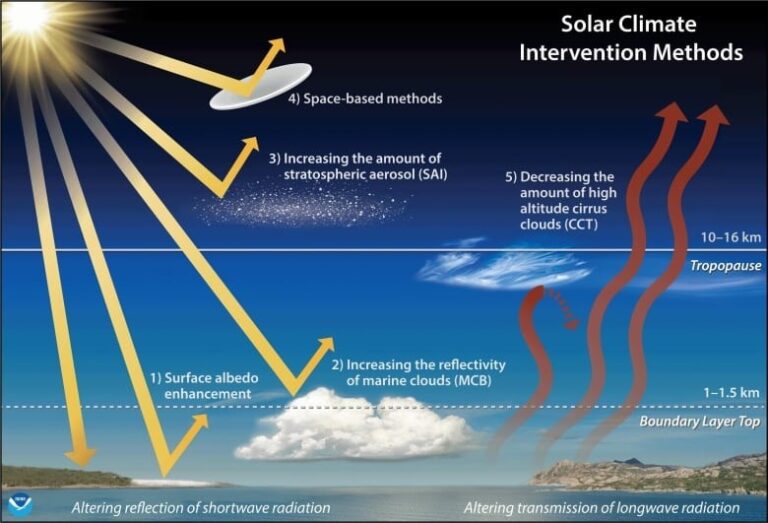
미세먼지 줄이자니 기온 상승 촉발 딜레마
한센 박사, 최근 논문서 경고
대기 오염물질 배출을 제한하자니 지구 평균 기온이 오르고 그냥 두자니 환경 오염으로 인류의 건강을 해치게 되는 딜레마가 현실로 드러났다.
미세먼지를 비롯한 이산화황 등은 석탄이나 석유를 태울 때 많이 발생하는 대표적인 오염물질이다. 이들 미세 입자들을 비롯한 더 큰 오염입자들은 연기의 모양으로 대기 중에 확산되며 태양빛을 우주로 반사해 내는 역할을 한다. 이 때문에 지구 표면에 도달하는 열기가 줄어 지구의 평균 기온 상승을 약간 억제해 주는 것으로 알려졌다.
2020년 UN 산하 국제해사기구(IMO)는 선박에서 배출되는 유해한 환경오염물질 억제를 위해 해양을 항해하는 선박에 사용되는 연료의 황 함량을 3.5%에서 0.5%로 강제로 낮추도록 했다. 이 조치가 올해의 급격한 기온 상승을 불러왔다는 지적이 나타났다.
NASA에서 46년 간 기후학자로 활동했던 미국 컬럼비아 대학 지구연구소 소장인 제임스 한센은 이런 내용을 담은 여러 동료 학자들과의 연구 논문을 11월 3일 발표했다. 옥스퍼드대학 오픈기후변화 학술지에 기재된 이 논문에 따르면 올해의 갑작스런 기온 상승은 2020년 이후 해양을 항해하는 선박에서 발생하는 미세 에어로졸의 감소 탓일 가능성이 크다는 것이다.
올 6월 이후 지구의 평균 기온은 지난 150년 동안 가장 높았고 올 평균 기온은 산업화 이전에 비해 1.5도 이상 높을 것이라는 전망이 우세하다. 1.5도 상승은 전 지구가 함께 지키기 위한 마지노선의 첫 부분으로 여겨지고 있다.
세계기상기구(WMO) 과학자들은 지난 7월 예측에서 향후 5년 중 한 해가 산업혁명 이전보다 1.5℃ 더 뜨거워질 확률이 3분의 2에 달할 것이라고 주장했으나 올해가 바로 그 첫 1.5도 높은 해로 기록되게 됐다. 이 기온은 지난 12만년동안 겪어 보지 못한 기온이다.
1988년 기후변화에 관해 미국 의회에서 증언을 하며 관련 권위자로 인정받고 있는 한센 박사는 지구의 에너지 불균형이 두배로 증가해 온난화가 점점 가속화 되고 있다고 말했다. 또 IMO에 의해 강제된 선박연료로 사용되는 석유의 황 함유 축소 규정이 장기적으로 파리협정의 한계치인 섭씨 2도 상승도 가속화 시킬 수 있을 것이라고 경고했다. 한센은 이미 1.2도 정도가 올랐는데 앞으로 10년은 평균 1.5도 상승한 온도일 것이라고 예측했다. 1.5도에 이르면 바로 대멸종 시대가 되는 티핑포인트라고 단언하기는 어렵지만 돌이킬 수 없는 임계점을 지날 가능성이 높아지는 것은 확실하다.
이 논문은 1970년부터 2010년까지 지구 기온 상승의 속도가 10년에 0.18도 정도였지만 앞으로는10년에 최소 0.27도까지 증가할 것이라고 말한다. 이 속도대로라면 2020년대에 1.5도, 2030년대에 1.77도, 2040년대에 2.04도를 돌파해 2050년 2도 상한선도 지키기 어려울 것으로 보인다.
연구의 공동저자인 레온 시몬스 박사도 과거에는 선박의 유황을 줄일 경우의 영향을 제대로 계산해 내지 못했으나 이번 연구에서 실제 그 영향을 실시간으로 보여주고 있다고 동의했다.
그러나 이 연구에 의문을 제기하는 학자들도 있다. 펜실베이니아 대학교의 지구과학 교수인 마이클 만은 자신의 개인 웹사이트에 이 논문에 대한 장문의 비평문을 올렸다. 만 교수는 해양의 열 함량이 꾸준히 증가하고 있지만 한센의 주장과 달리 가속화되지는 않고 있으며 지난 몇 년 동안 에어로졸 오염도에 갑작스러운 변화가 없다는 데이터를 인용했다. 다른 연구자들은 선박 연료의 변화로 인한 에어로졸 오염의 감소가 지구 기온을 섭씨 0.05 또는 0.06℃ 정도만 변화시킬 것이라고 주장하기도 했다.
정필립(토론토 생태희망연대)
Reducing Fine Particulate Matter Triggers Warming Dilemma
Dr. Hansen warns in new paper
The dilemma of limiting air pollutant emissions and allowing global average temperatures to rise, or leaving them unchecked, is a real one.
Fine particulate matter and sulfur dioxide are common pollutants produced by burning coal or oil. These fine particles and larger pollutants diffuse into the atmosphere in the form of smoke, which reflects sunlight back into space. This reduces the amount of heat that reaches the Earth’s surface, which has been shown to slightly reduce the average global temperature increase.
In 2020, the International Maritime Organization (IMO), part of the United Nations, mandated a reduction in the sulfur content of fuel used by ships sailing the oceans from 3.5% to 0.5% in an effort to curb harmful emissions from ships. This action has been blamed for this year’s dramatic temperature increase.
James Hansen, director of the Earth Institute at Columbia University in the United States, who was a climatologist at NASA for 46 years, published a research paper with several colleagues on Nov. 3 making the case. The paper, published in Oxford University’s Open Climate Change journal, suggests that this year’s sudden temperature rise is likely due to a reduction in fine aerosols from ships sailing the oceans since 2020.
Since June, global average temperatures have been the highest in the past 150 years, and the consensus is that this year’s average will be more than 1.5 degrees Celsius above pre-industrial levels. A 1.5-degree rise is considered the first part of the global threshold.
World Meteorological Organization (WMO) scientists claimed in a July forecast that there was a two-thirds chance that one of the next five years would be 1.5 degrees hotter than pre-industrial times, but this year marks the first 1.5-degree year on record. These temperatures have not been seen in the last 120,000 years.
Dr. Hansen, who testified before the U.S. Congress on climate change in 1988 and is considered a leading authority on the subject, said the warming is accelerating because the planet’s energy imbalance has doubled. He also warned that IMO-mandated rules to reduce sulfur in oil used as marine fuel could accelerate the Paris Agreement’s 2-degree Celsius limit in the long run. We’re already at 1.2 degrees, Hansen said, and the next decade will likely average 1.5 degrees. While it’s hard to say that 1.5 degrees is a tipping point that will lead to a mass extinction event, it certainly increases the likelihood that we’ll cross an irreversible threshold.
The paper says that from 1970 to 2010, the rate of global warming was about 0.18 degrees per decade, but it will increase to at least 0.27 degrees per decade going forward. At this rate, the world will hit 1.5 degrees in the 2020s, 1.77 degrees in the 2030s, and 2.04 degrees in the 2040s, making it difficult to meet the 2-degree cap in 2050.
Dr. Leon Simmons, co-author of the study, agrees that the impact of reducing sulfur in ships has been poorly calculated in the past, but this study shows the real impact in real time.
However, there are academics who question the study. Michael Mann, a professor of geosciences at the University of Pennsylvania, wrote a lengthy critique of the paper on his personal website. Mann cites data showing that the heat content of the ocean is steadily increasing, but not accelerating as Hansen claims, and that there has been no sudden change in aerosol pollution levels over the past few years. Other researchers have argued that a reduction in aerosol pollution due to changes in ship fuel would only change global temperatures by 0.05 or 0.06 degrees Celsius.
Still, Hansen et al’s study is enough to raise alarm bells that there may be a reason for the recent sharp rise in temperatures that scientists haven’t anticipated.
By Philip Jung (HNET) (AI translated)
